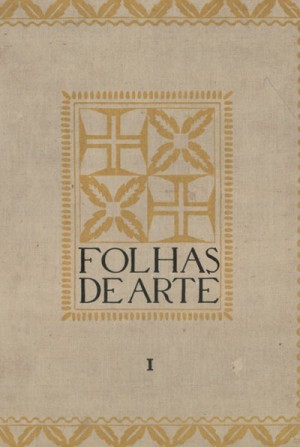
This magazine is literally composed of 'art sheets', loose and grouped in a cloth folder with the name of the publication. Each poem is autographed, written and signed, with the author's daguerreotype. It was directed by Augusto de Santa-Rita, being one of the best modernist magazines, a real work of art, and quite schematic. The theme of the first issue is contemporary poetry, in which Pessoa collaborates with "Canção" (p.17), and the second will be about the national lied and comes with an editorial 'notice': "This issue [...] is intended for to be included on the cover of the previous number [...], which, together with the third - Drawing and Painting -, will constitute the FIRST BOOK." [sic]
This magazine has the particularity of having a collaboration that’s exclusively literary, usually unpublished, with the exception of the aforementioned photography.
The list of collaborators is extremely recognizable to the reader of the period. At the head of its first issue, three women poets with personal and family ties to the best known modernists stand out: Branca Gonta Colaço (daughter of Portuguese politician and writer Tomás Ribeiro and married with Jorge Rey Colaço, an important ceramist, with whom he would have a son Tomás Ribeiro Colaço, writer), Fernanda de Castro (wife of the influential António Ferro) and Virgínia Victorino, perhaps the best-known poetess of this period.
On the other hand, in order to ratify the magazine in the meager literary space, two illustrious dead figures, important in the modernist pantheon, are also included: Gomes Leal, who had recently died in 1921, and António Nobre, a precursor whose book Só Pessoa considered one of his favourites.
In the second issue, as mentioned, the theme will revolve around music, with lyrics by the magazine's director and some of the poets already included in the previous issue - Afonso Lopes Vieira, Augusto Gil - in dialogue with the musical scores of Claudio Carneyro (son of the northern painter and illustrator António Carneiro), Luís de Freitas Branco and the avant-garde Ruy Coelho, the leading trinity of music at the time.
The third number will never come out, which can be justified by the hefty costs of composing and printing these very high quality cards, grouped together by a fabric ribbon. A paradigm of the encounter, in modernist magazines, between tradition and modernity.
Ricardo Marques
